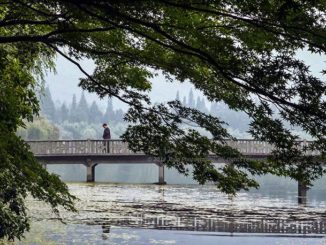Effective SEO for photographers is even more important these days, now that everyone seems to be a photographer! With smartphones having good cameras and with all sorts of social media sites focusing on sharing pictures, the Web is drowning in sepia-filtered photos of food and wacky cats.
To rise above all the other photography websites, search engine optimization or SEO is a must.
Not only does it help raise a website’s rank in the search engine results pages (SERPs), it also helps streamline the website’s brand for increased visibility and gets it connected with influencers in the industry.
It’s a necessity in general SEO for text-heavy websites, and it also applies to websites filled with images. When coming up with the description for your image files, you want to be as detailed as possible to rank for the long-tail keywords.
You can’t expect to rank very high for competitive keywords right away, and using long-tail keywords allows you to capture multiple ones in the process. You also need to place these keywords in the alt tags for the images they describe and in the title tags.
SEO Tools For Webmasters
There are a few fantastic seo programs which can help you with your photography sites seo. They provide you with all the tools needed to track your keywords, advise you on link building and optimisation advice for your website on an ongoing basis.
We personally use (and can recommend) Rank Tracker which is a component of the excellent SEO Power suite program, to track our own sites keyword ranking performance. We particularly like this program as there are no monthly subscriptions, unlike other SEO software!
2. Optimize your images.
Aside from using keywords for your photos’ filenames, in their alt tags and in their pages’ title tags, you can also plug them into the captions (if you use those). You should also apply the same logic through descriptive keywords for your photos’ filenames by using long image descriptions for those photos (longdesc=). Search engines take these into account, increasing the relevance scores for photos with detailed long image descriptions.
3. Merge your blog with your website.
Just because it’s a website dedicated to photography doesn’t mean you have to keep it strictly to just posting pictures. A blog is one of the biggest assets any website can have with the additional keywords for which you can rank, plus the regular amount of content you can publish.
If you already have one, put it in the same domain as your photo website to take advantage of the traffic and links you’ve already built up on that blog. If you don’t have one yet, start on it ASAP. You can even use it alongside the pictures you have to tie both elements together for greater content.
4. Submit to image bookmarking sites.
Image bookmarking sites are very useful to getting your photographs seen all across the World Wide Web and there are so many choices available, so do some online research. Take a look at the following examples – sites that will help you get your pictures linked-to and shared throughout social media and the Internet at large.
Flickr
Deviantart
Fotki
vi.sualize.us
5. Submit to photo directories.
Like sending your pictures to image bookmarking sites, you can increase your website’s online presence with photo directories. But instead of submitting individual images, you are promoting your entire website for these directories’ visitors to see. You can also use these directories to hunt down other photography websites for link-building opportunities and ideas for content creation.
6. Promote through social media.
There’s simply no ignoring Facebook or Twitter or any of the biggest social media sites out there when it comes to getting anything known nowadays and it’s important in terms of seo for photographers. Create an account for your photography website for these platforms, and put up some photos to give visitors a peek of what you can offer in your official site.
There are also other sites that can have your photos making the rounds online. such as Digg and StumbleUpon. These are social bookmarking sites that get a ton of traffic, but with the amount of content getting uploaded, you have to send the very best of your catalogue if you want to break into the front pages of these sites. You can read more about social media seo in this article.
7. Use reverse image searches.
You might already have some of your pictures being used in other websites without your knowing. Get to reverse image searching on some of your popular photos using Google Images or the handy TinEye website.
For Google, you can either type in the url of the image you want to check, the filename or the keywords that you used for that image. You can also choose to upload the image itself to see if there are any matches online.
For TinEye, just plug in the url.
Make a list of the other websites using your picture(s) without your permission, and contact each of the webmasters to ask for a link in return so they can keep hosting your picture(s).
8. Reach out to other photobloggers.
A major part of seo for photographers is getting quality connections with people and communities relevant to your industry. Start making these connections by visiting the other websites of your fellow photographers.
See if they have blogs, and provide some insightful comments if they do. If they have their email addresses on display, contact them to see if they’re O.K. with you creating a guest post for their blogs.
Look for their social media profiles, follow them, and engage them whether through commenting on their uploaded photos on Facebook or retweeting and giving a shout-out on Twitter.
Get some relationship-building going with some of the biggest online influencers in the photography industry.
9. Invite guest posts.
On the flipside, you should also get the photobloggers you trust to provide a guest post on your website. They will be bringing in their own network of fans and colleagues all the way to your blog, driving up traffic both in the short-term as well as in the long-term. The natural links you get will also help make your website rank higher in the SERPs.
Of course, you don’t have to limit yourself to the photobloggers you know. Create a landing page for contributors that is easy to see, so you also attract those other up-and-coming photobloggers looking to build their own network.
10. Host a Contest.
There are two things a lot of people online love – recognition and free stuff. When you put those two things together, you’ve got a recipe for successfully making your photography website highly visible. Running a contest will get you all sorts of awesome user-generated content, good links from the participants if they have their own blogs and websites, and more exposure throughout the online photography community.
Chances are you’re going to need a partner to help organize the event and sponsor the prizes. With the amount of attention and the potential for high quality links brought by the contest, you shouldn’t have too many problems getting other websites to sign on. We hope these seo for photographers tips have been of some help
By Todd Mumford, Riverbed Marketing





Hi,
Thanks for sharing info.